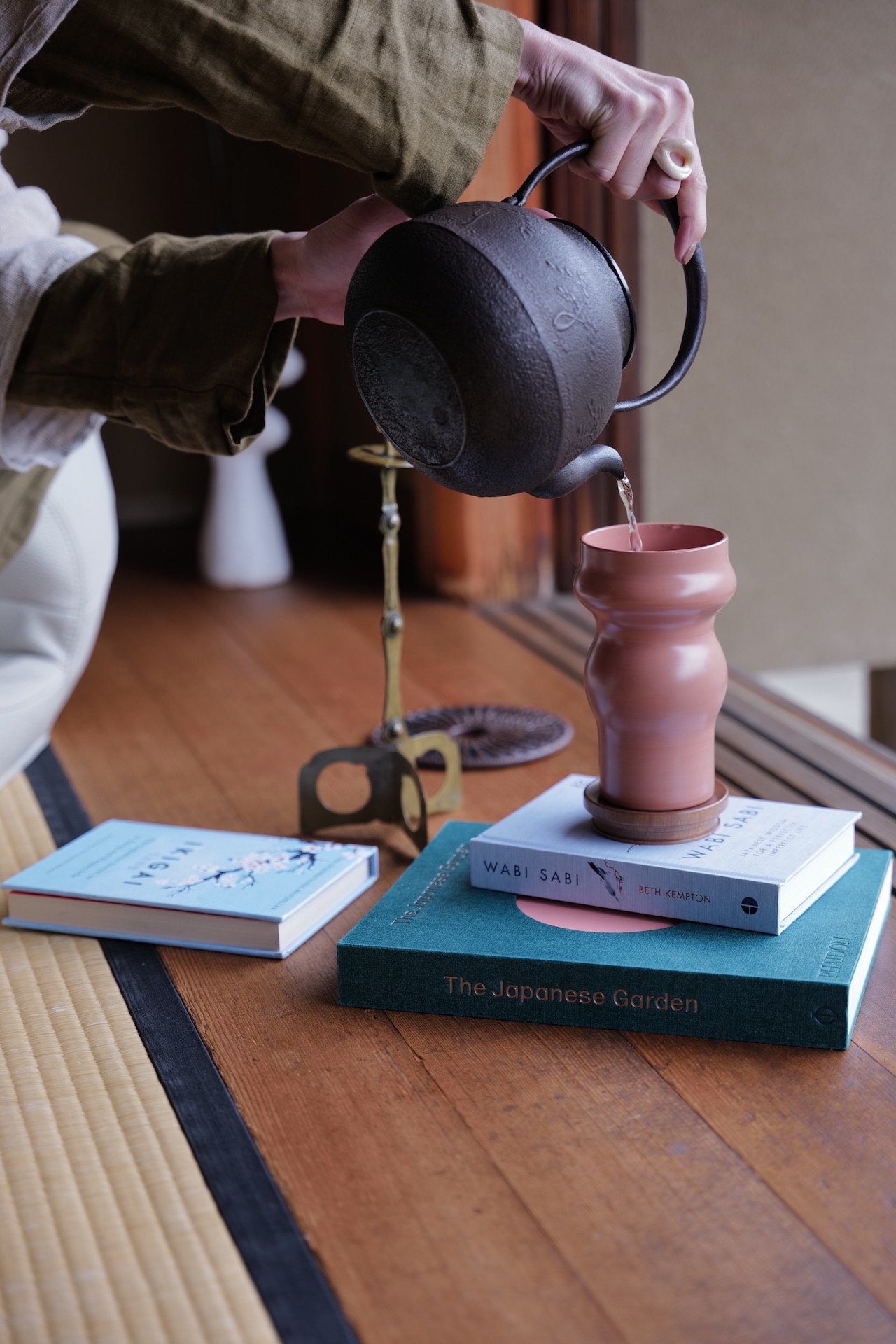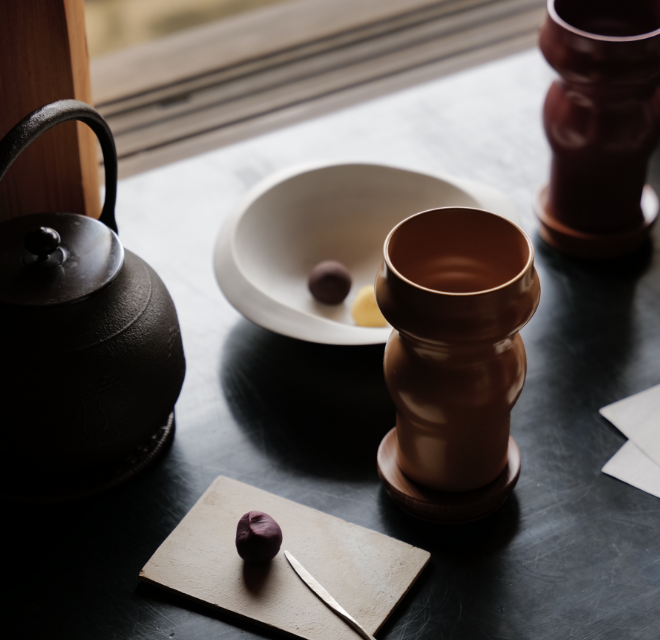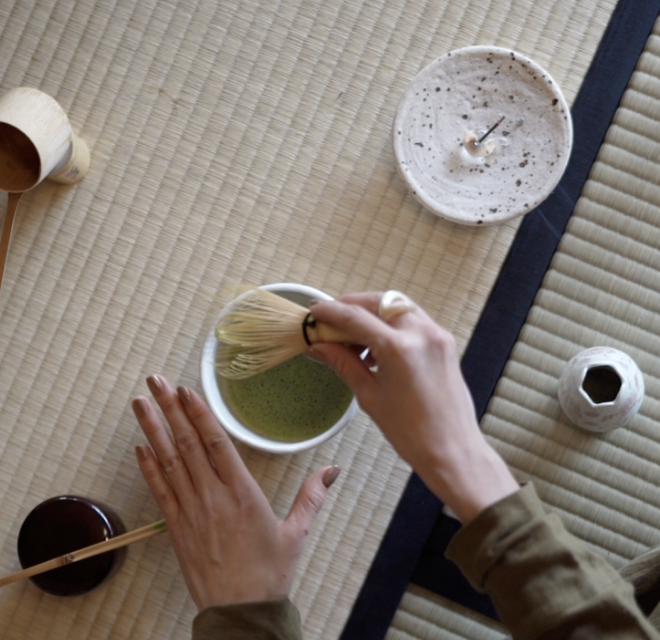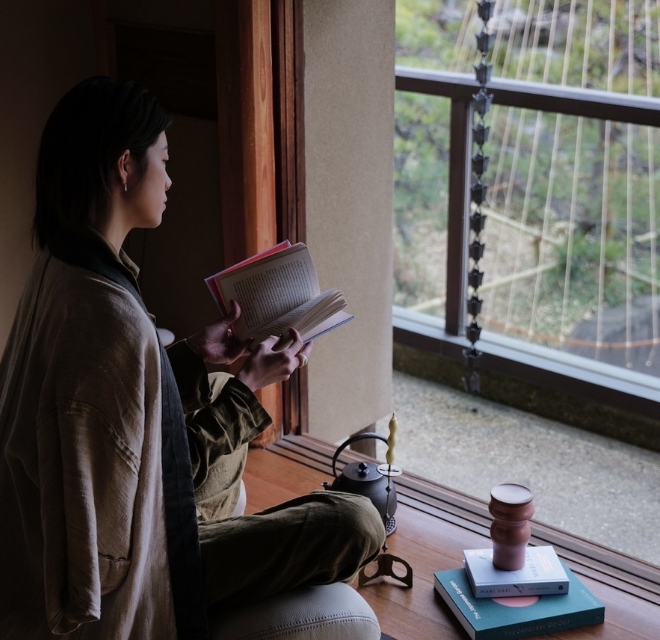Noto’s ingredients on a plate - Japanese-style French restaurant
Wajima is a port town that has prospered with bustling industry in both lacquerware and fishery for centuries. Due to the close proximity to both the sea and mountains, Wajima is a town with abundant natural resources. In the morning, local mothers set up a makeshift market to sell freshly caught fish and harvested vegetables. One such restaurant that benefits from being so near this market is the French restaurant L’Atelier de Noto, a popular Michelin Restaurant specializing in French-style cuisine using local Noto ingredients. The storefront is the maintained façade of a Wajima-nuri painter’s home, so it blends seamlessly into the rest of the area so much that there is no obvious sign that it is indeed a restaurant. The renovated interior is calm and modern. As there is a garden and large warehouse to greet guests into the space tastefully, one is sure to expect a special experience here.
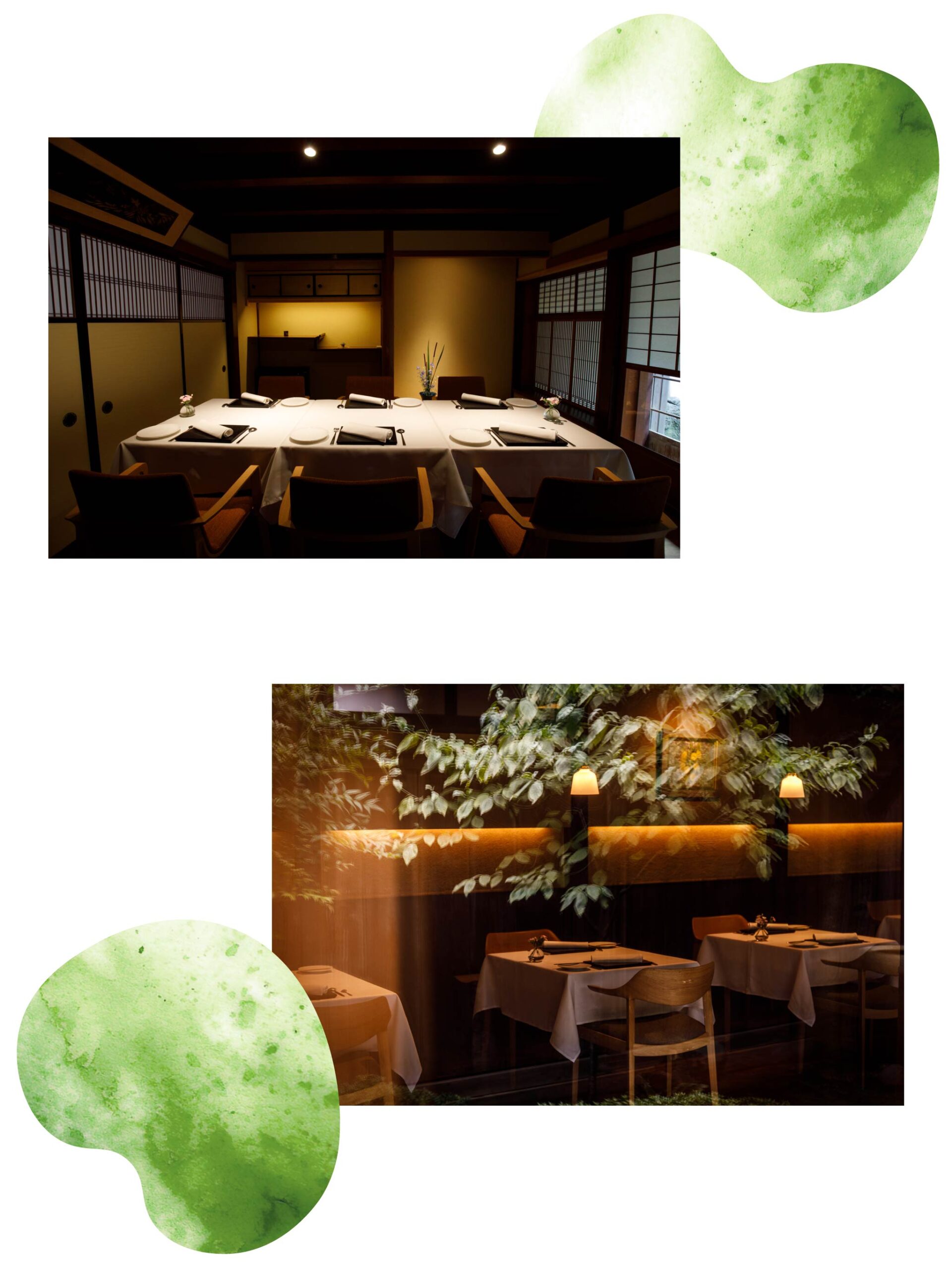
The Charm of Noto through a restaurant
The chef and owner, Toshiya Ikehata, was born and raised in Wajima. After graduating from high school, he honed his cooking skills at famous restaurants in Osaka and Michelin restaurants in France. Originally, he wanted only wanted to leave Noto as quickly as possible but it was the untapped potential of Noto’s ingredients that inspired him to do the opposite.
“I had been in Wajima for a while after returning from France to care for my mother, and I was asked to cater by a painter at the time. That was the first time I started to look into what local ingredients were available to me here. To my surprise, everything was delicious. There’s a huge variety of edible wild plants and many local farmers. Wajima suddenly appeared to glitter with all its treasures; it’s amazing!”
Chef Ikehata became inexplicably charmed by his own hometown in a way he hadn’t before. He was convinced that “people can be called by cooking, even in the countryside” based on his experience of international gastronomy at a restaurant in the remote French countryside where he used to work. Inspired, he decided to make a new start in Wajima, based on the concept of showing the charm of Noto through food by making local ingredients the star.
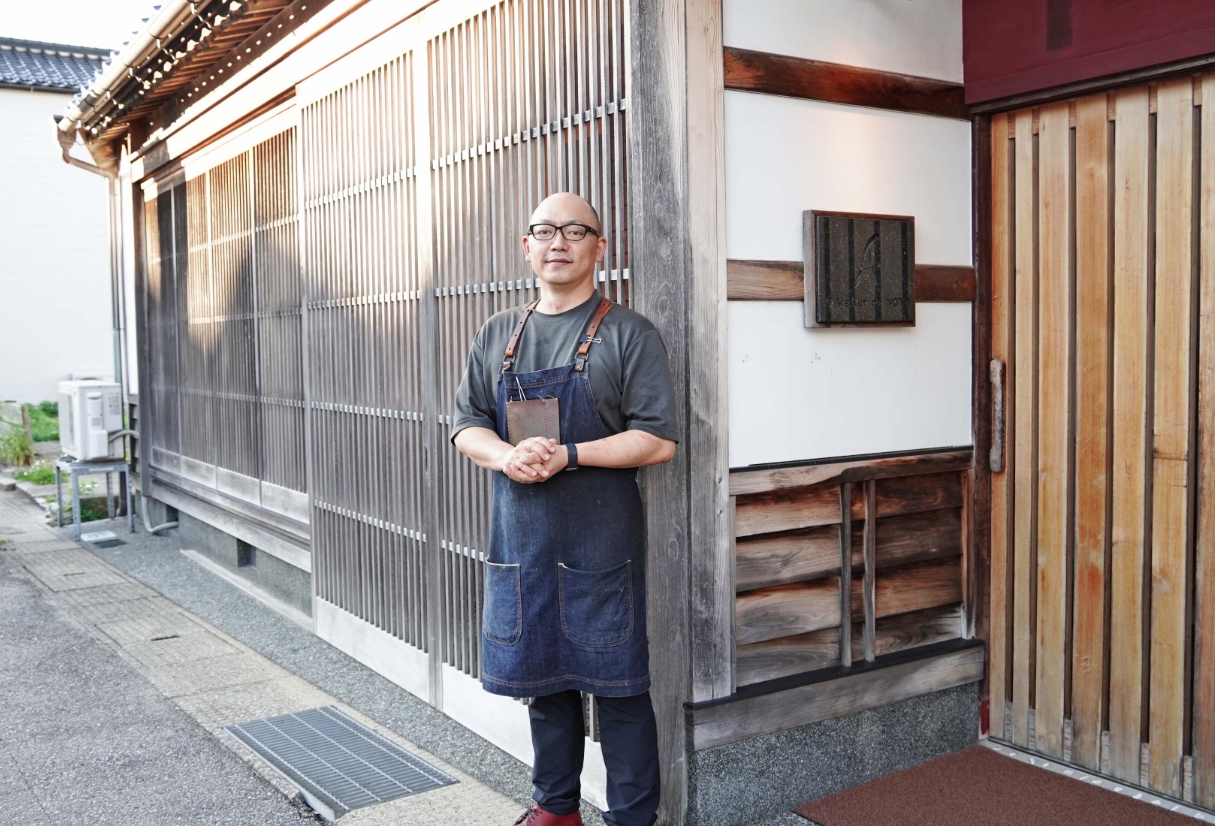
A Chef’s Culinary Philosophy Shaped By Produce
Chef Ikehata makes it a daily routine to see various producers anywhere they are; be it fishing ports, morning markets, fields, ranches, or the mountains. “For example, here you can see who actually catches the fish and how it’s done. How many people reel in fish from a depth of hundreds of meters, where and how to tighten the line, cooking begins at that point. It’s like cooking in collaboration with the fishermen, in this case.” Sometimes local fishermen are gathered to share knowledge in makeshift study sessions.
“And sometimes we eat and compare the differences between expensive blackthroat sea perch in Kyushu and the local blackthroat sea perch caught here in Wajima with the fishermen from neighboring towns. We can avoid the market price to drop drastically if we price it right. By doing so, we in turn protect fishery resources in the long run.”and cause the market price will drop sharply, and protect fishery resources in the long run.” Additionally, Chef Ikehata says he often learns from producers. The highland farms on Noto Island that produce vegetables have transactions with chefs all over the country, thereby learning a lot by experience. Some vegetables were sent to him like a challenge, as they were varieties he had never used before. This lighthearted exchange not only establishes relationships with the producers, but allows for the enhancement of each other’s separate skillsets while having fun.
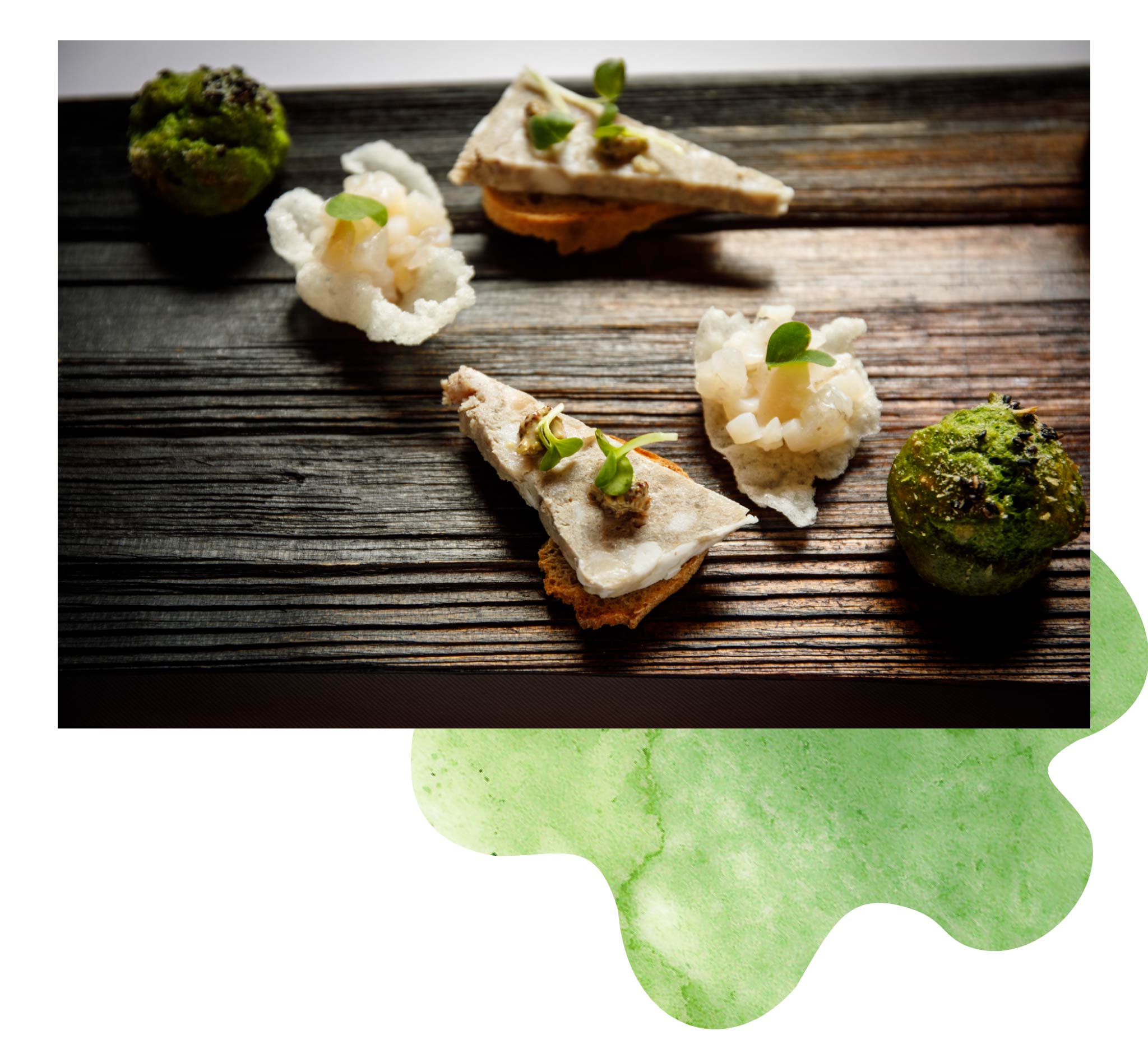
Satoyama Satoumi’s Special Blessings
Chef’s Ikehata’s cuisine is original, but makes sure to allow the ingredients to shine so every plate expresses a deep love and respect for the produce. Each recipe is carefully formulated with that in mind, crafted with the skills of a reliable cook. “For example, Wajima’s variety of puffer fish retain a lot o water, but if you slice it thickly the resulting texture and feel is fuller. By draining it over two days, it changes the ingredient itself so even when I’m not really doing anything specific, I feel like I’m using the unique knowhow specific to the locale.”
Additionally, the combination of surprising ingredients is unique to Chef Ikehata, such as the use of rich turkey soup from birds reared in Wajima on top of Noto oysters. Surprisingly, such recipes are rooted in the local environment and home cooking from his childhood.
“It feels like I’m proposing a new way of eating in my own way, based on fermented foods that I’ve been eating since I was a child like buri daikon, oyster nabe, and the like.”
Chef Ikehata’s passion for Noto and Satoyama Satoumi’s produce is in this dish. Noto #115 confit, seaweed powder, mackerel marinade, wild edible grass foraged by Chef Ikehata himself in the mountain range, and picked spring orchid is vividly arranged on a komatsuna crepe on the plate. The blessings from this area and its people united on the plate.
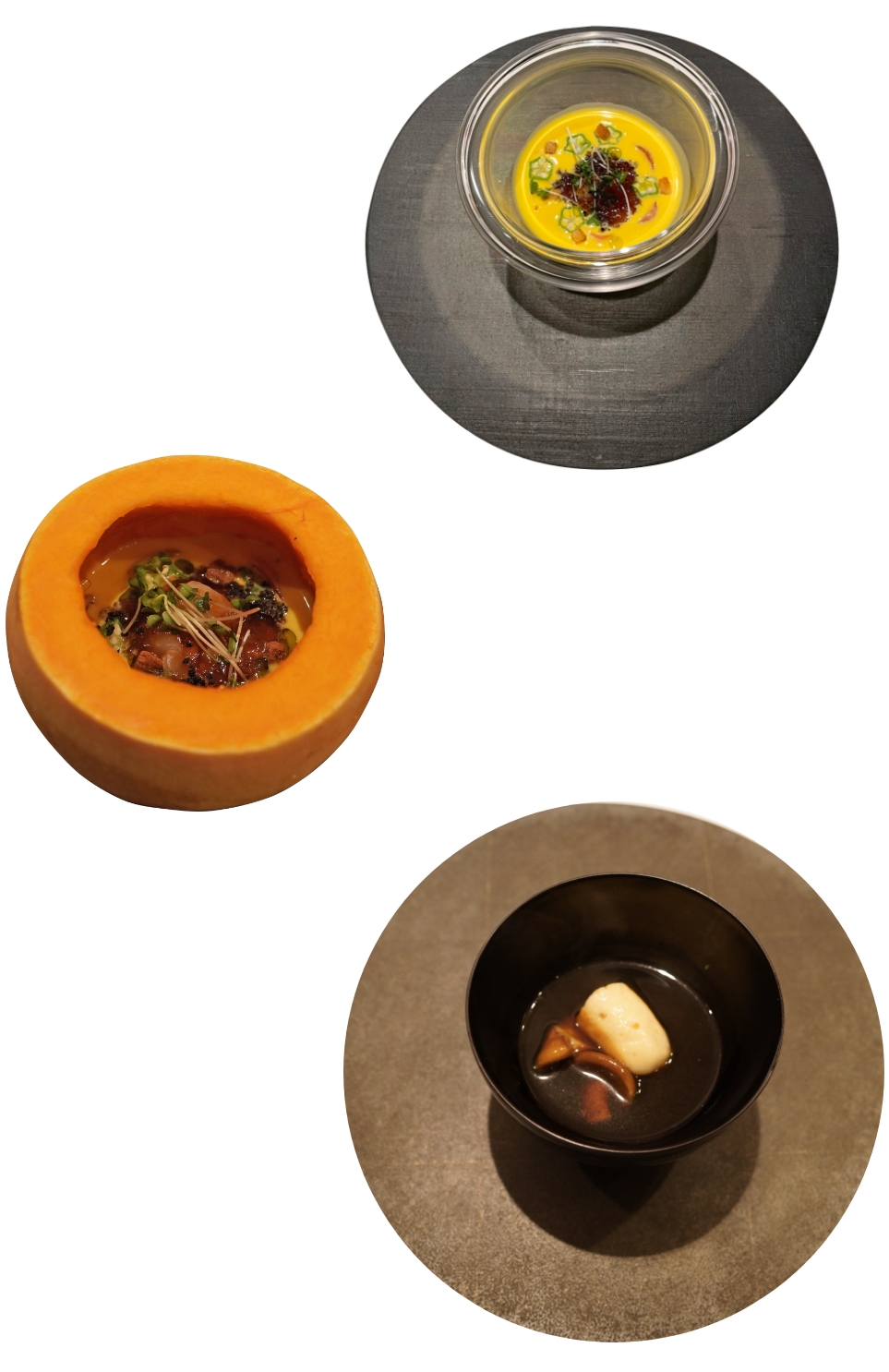
Respect For The Ingredients
Chef Ikehata always makes sure to pay the utmost respect to the producers of raw ingredients, who work in tandem with local chefs to protect the environment and ensure that the abundance of resources is maintained for future generations. There is support for the reconstruction of local ranches that were forced out of business due to financial difficulties, and there is hope to add value to the milk of grass-fed cows in the area. There is also the aim of raising the profile of local vegetables, notably Noto’s Karagawa greens.
“Some farmers bring me so many vegetables that I am compelled to create a menu that utilizes those gifts to the best of my own ability, through my ideas and skills. I think it’s okay to have such patterns. In places like this, that kind of thing is surprisingly important.”
An esteemed French restaurant in Noto that is full of local love. It is a unique restaurant where you can trust the chef to bring you into their world, blessed by Noto.
L’Atelier de NOTO
add: 4-142, Kawaimachi, Wajima-shi, Ishikawa
WEB:https://atelier-noto.com
Photo: L'atelier de noto & Mammy Horie & Hikari Mori
Text: Yuka Sone Sato
Design: Mammy Horie
Translation: Kelly Yeunh





